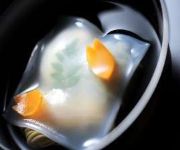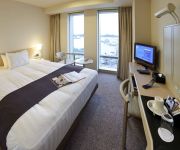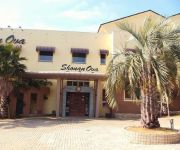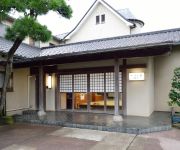Safety Score: 2,8 of 5.0 based on data from 9 authorites. Meaning we advice caution when travelling to Japan.
Travel warnings are updated daily. Source: Travel Warning Japan. Last Update: 2024-08-13 08:21:03
Delve into Kayagiyama
The district Kayagiyama of Shimoyamaguchi in Miura-gun (Kanagawa) is a district located in Japan about 30 mi south of Tokyo, the country's capital town.
In need of a room? We compiled a list of available hotels close to the map centre further down the page.
Since you are here already, you might want to pay a visit to some of the following locations: Zushi, Kamakura, Yokosuka, Miura and Fujisawa. To further explore this place, just scroll down and browse the available info.
Local weather forecast
Todays Local Weather Conditions & Forecast: 18°C / 64 °F
| Morning Temperature | 17°C / 62 °F |
| Evening Temperature | 20°C / 67 °F |
| Night Temperature | 19°C / 67 °F |
| Chance of rainfall | 11% |
| Air Humidity | 74% |
| Air Pressure | 1018 hPa |
| Wind Speed | Moderate breeze with 10 km/h (6 mph) from South |
| Cloud Conditions | Overcast clouds, covering 100% of sky |
| General Conditions | Moderate rain |
Saturday, 16th of November 2024
19°C (67 °F)
19°C (66 °F)
Sky is clear, moderate breeze, clear sky.
Sunday, 17th of November 2024
19°C (67 °F)
21°C (70 °F)
Sky is clear, moderate breeze, clear sky.
Monday, 18th of November 2024
13°C (56 °F)
12°C (53 °F)
Light rain, fresh breeze, overcast clouds.
Hotels and Places to Stay
Kamakura Park Hotel
Mercure Yokosuka
Shonan OVA
Sajima Marina Hotel
(RYOKAN) Kotsubo Kaigan Rinka
Hotel Mets Kamakura Ofuna
(RYOKAN) Arasakikaion Sagamiya
(RYOKAN) Kaihinso Kamakura
Central Hotel (Kanagawa)
Hotel Kamakura Mori
Videos from this area
These are videos related to the place based on their proximity to this place.
Let explore the forest of seaweed of Hayama while rowing a stand up paddle.
Listen with headphones.The noise of paddle tickles your ears. A camera WG-M1 has been underwater fixed behind the board.
Action Cam WG-M1 Waterproof Test in Hayama, Japan
This is a test to use the action camera WG-M1 for Stand Up Paddling.
Landscape of JAPAN:Stay in Kanagawa「Hayama Choujagasaki」葉山 長者ヶ崎
https://www.google.co.jp/maps/place/%E9%95%B7%E8%80%85%E3%83%B6%E5%B4%8E/@35.2542446,139.5807192,18z/data=!4m2!3m1!1s0x0:0x5573fe5b1ea06d0.
2014年 葉山マリーナサマーフェスタ - ピンクリボン スペシャルステージ -
Hayama Marina Summerfesta 2014 Izumi&Ogawa Leilani / Alika 2014年8月9日に「葉山マリーナサマーフェスタ2014」が開催されました。 乳がん検診の大切さをより多く...
葉山マリーナサマーフェスタ2014ダイジェスト
Hayama Marina Summerfesta 2014 2014年8月9日 葉山マリーナで開催された「葉山マリーナサマーフェスタ2014」のダイジェスト版.
Videos provided by Youtube are under the copyright of their owners.
Attractions and noteworthy things
Distances are based on the centre of the city/town and sightseeing location. This list contains brief abstracts about monuments, holiday activities, national parcs, museums, organisations and more from the area as well as interesting facts about the region itself. Where available, you'll find the corresponding homepage. Otherwise the related wikipedia article.
Keikyū Taura Station
Keikyū Taura Station is a railway station operated by the Keikyū Main Line located in Yokosuka, Kanagawa Prefecture, Japan. It is located 44.5 rail kilometers from the northern terminus of the Keikyū Main Line at Shinagawa Station, in Tokyo.
Anjinzuka Station
Anjinzuka Station is a railway station operated by the Keikyū Main Line located in Yokosuka, Kanagawa Prefecture, Japan. It is located 47.2 rail kilometers from the northern terminus of the Keikyū Main Line at Shinagawa Station, in Tokyo.
Zushi Station
Zushi Station is a railway station in Yokosuka, Kanagawa, Japan, operated by East Japan Railway Company (JR East). It is located 8.4 kilometers from the junction at Ōfuna Station, and 57.8 kilometers from Tokyo Station.
Jimmuji Station
Jimmuji Station is a railway station operated by Keikyu on the Zushi Line located in Zushi, Kanagawa, Japan. It is located 4.1 rail kilometers from the junction at Kanazawa Hakkei Station, and 45.0 rail kilometers from the northern terminus at Shinagawa Station.
Shin-Zushi Station
Shin-Zushi Station is a railway station operated by Keikyū Zushi Line located in Zushi, Kanagawa Prefecture, Japan. It is the southern terminus of the Zushi Line, and is located 5.9 rail kilometers from the Kanazawa Hakkei junction, and 46.8 kilometers from the opposing northern terminus at Shinagawa Station.
Yuigahama
is a beach near Kamakura, a city in Kanagawa Prefecture, Japan. The relation between the beach and its neighboring areas is complex. Although Yuigahama is legally the entire 3.2 km beach that goes from Inamuragasaki, which separates it from Shichirigahama, to Zaimokuza's Iijima cape, which separates it from Kotsubo and the Miura Peninsula, the name is customarily used to indicate the portion west of the Namerigawa river, while the eastern half is called Zaimokuza Beach .
Wakae Island
Wakae Island is an artificial island, the oldest in Japan, now in ruins. The name means "Waka Bay Island" from Waka, Zaimokuza's old name (see the text of the commemorative stele, below). Its remains are located at the east end of Zaimokuza Beach near Kamakura and are still visible at low tide. It was built in 1232 and, in spite of its state of disrepair, it has been declared a national Historic Site because it is the sole surviving example of an artificial harbor from the Kamakura Period.
Graduate University for Advanced Studies
The Graduate University for Advanced Studies is one of the national universities of Japan. It is located in the town of Hayama in Kanagawa Prefecture. It was established in 1988. Its nickname is Sōkendai . From 1988 to 1995 the university's headquarters was located in Nagatsuta, Midori-ku, Yokohama.
An'yō-in (Kamakura)
An'yō-in is a Jōdo shū Buddhist temple in Kamakura, Kanagawa, Japan. Famous for its azaleas, it was named after its founder's (great historical figure Hōjō Masako) posthumous name. The main object of worship is Amida Nyorai, but it also enshrines Senju Kannon, Goddess of Mercy. An’yō-in is Number three of the 33 temples of the Bandō Sanjūsankasho pilgrimage circuit.
Zaimokuza
is an area within the Kamakura, Kanagawa Pref. , in Japan that runs along the sea from Cape Iijima near Kotsubo harbor to the estuary of the Namerigawa. The relation between the beach's name and that of its neighboring areas is complex. Although Yuigahama is in fact the entire 3.2 km beach that goes from Inamuragasaki to Zaimokuza's Iijima cape, the name is usually used to indicate just its half west of the Namerigawa river, while the eastern half is called Zaimokuza Beach .
Moto Hachiman
Moto Hachiman is a small but very old and historically important Shinto shrine in Kamakura, Kanagawa Pref. , Japan.
Hayama Imperial Villa
, located in the town of Hayama, Kanagawa Prefecture, Japan is a residence owned by the Japanese Imperial Family, and used on infrequent intervals as an informal winter retreat.
Nameri River (Kanagawa)
The Nameri River is a river that goes from the Asaina Pass in northern Kamakura, Kanagawa to the beach in Yuigahama, for a total length of about 8 km. Although Yuigahama is in fact the name of the entire 3.2 km beach that goes from Inamuragasaki to Zaimokuza's Iijima cape, the name is usually used just for its half west of the Namerigawa river's estuary, while the eastern half is called Zaimokuza Beach .
Hatakeyama Shigeyasu's grave
Hatakeyama Shigeyasu's grave was a Kamakura period warrior who fell victim of political intrigue in 1205. The grave under a tabu no ki tree near the Yuigahama end of Wakamiya Ōji Avenue in Kamakura, Kanagawa Prefecture, Japan and next to Tsurugaoka Hachiman-gū's first torii is traditionally supposed to be his. It is an Important Cultural Property and a famous example of hōkyōintō (a type of pagoda).
Ōmachi (Kanagawa)
Ōmachi is a locality (a machi or chō) in Kamakura, Kanagawa prefecture, Japan, defined as the part of town south of the Ebisubashi bridge on the Namerigawa. The part of town north of the same bridge is called Komachi .
Kantō kubō
(also called Kantō gosho, Kamakura kubō, or Kamakura gosho) was a title equivalent to shogun assumed by Ashikaga Motouji after his nomination to Kantō kanrei, or deputy shogun for the Kamakura-fu, in 1349. Motouji transferred his original title to the Uesugi family, which had previously held the hereditary title of shitsuji, and would thereafter provide the Kantō kanrei.
Ōmachi Ōji
is the name of a street in Kamakura, Kanagawa, Japan, which begins at Geba Yotsukado and ends at the Nagoshi Pass. It takes its name from the district of Ōmachi, which it crosses. At the time of the shogunate it was the most important road that went from east to west. The entertainment and red-light district of the city used to be at the intersection between Komachi Ōji and Ōmachi Ōji.
Myōhō–ji
Myōhō–ji is a Buddhist temple of the Nichiren sect in Kamakura, Kanagawa, Japan. It is one of a group of three built near the site in Matsubagayatsu, or the Valley of Pine Needles, where Nichiren, founder of the Buddhist sect that bears his name, is supposed to have had his hut. The temple has also close ties with Prince Morinaga and the Imperial House.
Ankokuron-ji
Ankokuron-ji is a Buddhist temple of the Nichiren sect in Kamakura, Kanagawa, Japan. It is one of a group of three built near the site in Matsubagayatsu (Valley of Pine Needles where Nichiren, founder of the Buddhist sect that bears his name, is supposed to have had his hut.
Chōshō-ji
Chōshō-ji is a Buddhist temple of the Nichiren Shū in Kamakura, Kanagawa, Japan. It's one of a group of three built near the site in Matsubagayatsu (Valley of Pine Needles where Nichiren, founder of the Buddhist sect that bears his name, is supposed to have had his hut. The first part of its name derives from the founder's last name, the second is an alternative reading of the characters for Nagakatsu, the founder's first name.
Kōmyō-ji (Kamakura)
is a Buddhist temple of the Jōdo sect in Zaimokuza, near Kamakura, Japan, the only major one in the city to be close to the sea. Kōmyō-ji is number one among the Kantō Jūhachi Danrin, a group of 18 Jōdo temples established during the Edo period by Tokugawa Ieyasu, and dedicated to both the training of priests and scholarly research. It is also the sect's head temple for the Kantō region.
Jōmyō-ji (Kamakura)
is a Zen Buddhist temple of the Rinzai sect, Kenchō-ji school, in Kamakura, Kanagawa Prefecture, Japan. Jōmyō-ji is Number Five of the five temples known as Kamakura Gozan ("Kamakura's Five Mountains"), and the only one of the five not founded by a member of the Hōjō clan. Jōmyō-ji has instead, as nearby Zuisen-ji, deep ties with the Ashikaga clan, and was one of the family's funeral temples. For this reason the family's kamon, or crest, is ubiquitous on its premises.
Higashi-Zushi Station
Higashi-Zushi Station is a railway station operated by JR East's Yokosuka Line located in Zushi, Kanagawa, Japan. It is located 10.4 kilometers from Ōfuna switch point, and 59.8 kilometers from the Tokyo Station.
Taura Station
Taura Station is a railway station operated by JR East's Yokosuka Line located in Yokosuka, Kanagawa, Japan. It is located 13.8 kilometers from Ōfuna switch point, and 63.2 kilometers from the Tokyo Station.
Hōkoku-ji
Hōkoku-ji is an old temple in the Kenchō-ji school of the Rinzai sect of Zen Buddhism located in Kamakura, Japan. Famous for its bamboo garden, it is also known as "Bamboo Temple". A statue of Gautama Buddha, called Shaka Nyorai in Japanese, in a sacred hall is the temple's principal image. The original of a statue of Sho Kan'non is on display at the Kamakura Museum of National Treasures.

























